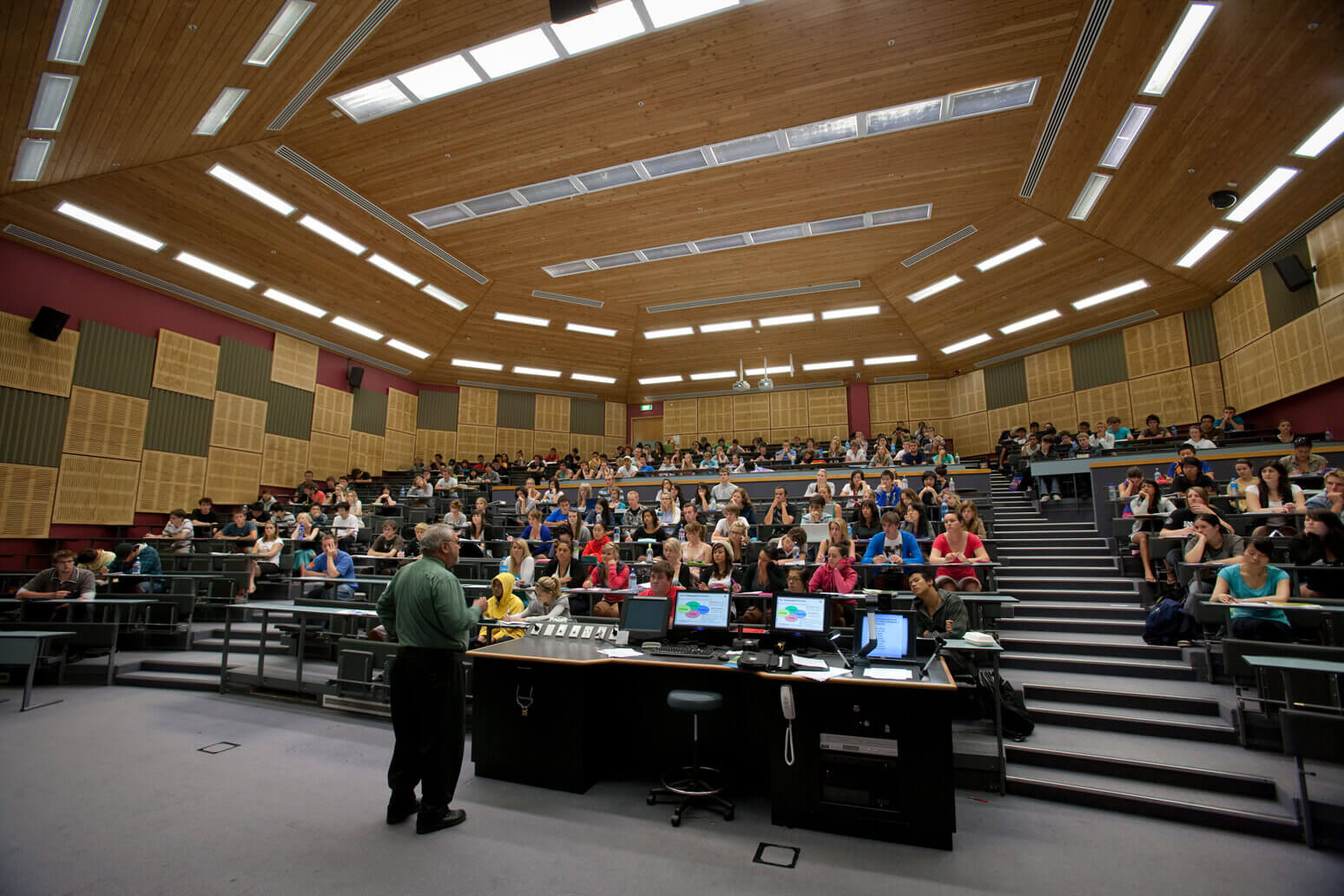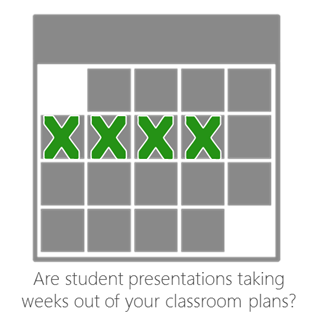- Academic Technology
Is “Flipping The Teacher” The Next Big Flipped Classroom Trend?

From their first ABCs to their final thesis defense, challenging students to present what they know is an integral part of the learning experience.
Across almost every subject at every level, student presentations have been a classroom standard since the dawn of the classroom itself. In recent years, however, the task has taken on a new level of prominence, as schools respond to mounting feedback from the business community to better prepare students for the presentations skills they’ll need in the workplace.
Rare is the syllabus now that doesn’t call for students to deliver at least one report, pitch, or presentation at some point during the semester. Which in turn for many teachers creates a whole new problem:
How can you cover everything you want to teach when days — or even weeks — of class time must be reserved for student presentations?
If your classroom has more students or if you’d like to add time following each presentation for Q&A, then the time required will increase significantly.
For many teachers, the only pragmatic solutions are patience and planning — accepting that student reports will eat up all available teaching time, and working to insert essential information more efficiently in other class sessions.
For a growing number of educators, however, the same technology that’s enabled the flipped classroom is now offering a better answer to this challenge as well.
Flip The Teacher: Inspired & Enabled By The Flipped Classroom
The flipped classroom has quickly become the most buzzed-about topic in education. An inversion of the traditional classroom experience, a flipped class begins before the session actually starts. The teacher provides the day’s lecture ahead of time, usually as one or a handful of short 5-20 minute videos, along with any supporting reading or video materials. Students are expected to review everything as their previous day’s “homework”, and come to class ready for deeper discussions on the subject and more interactive learning activities.
The enthusiasm for the flipped classroom model stems from its ability to help shift the classroom dynamic from passive note-taking to active learning — as well as the raft of early research data that suggests flipping the classroom can improve student test scores, reduce failure rates, and help engage students better than the traditional way of doing things.
So how does the flipped classroom solve the dilemma of scheduling student presentations?
Well for starters, some teachers find that flipping the classroom creates the class time needed to foster more of just that kind of activity. Flipping lets the teacher continue sharing new ideas via recorded lectures, while class time can be held for students.
For others, the answer is even more simple: flip the teacher, and flip the student presentation.
Flipping the Teacher Is Easier with Technology
As teachers begin experimenting with what works inside their own classrooms, “flipping the teacher” has become a catch-all term to refer to just about any means by which educators can have students lead the classroom. While certainly not the only strategy, the traditional student presentation — assigning students to deliver a report on a given subject to their peers — is perhaps the quintessential example.
Flipping the teacher pushes students not merely to learn a few facts about a subject, but to actually comprehend the lesson well enough to synthesize its details into a cohesive, coherent presentation. The benefits are obvious — but they return us to the problem above, namely, how do you find time to balance those student presentations with your own lecture plans?
Simple: by tapping the same technology used to flip the classroom.
Using video to record student presentations offers the best of both worlds — students can be challenged to sharpen their presentation skills and demonstrate their knowledge to an audience, while at the same time opening up class time that would otherwise be locked for individual, one-by-one presentations.
Best of all, there are a dozen ways to do it. Some classes ask students to record their videos at home as homework, using their own laptops or smartphones. Students are free to practice as much as needed and record multiple takes, sharing only the best version for review. Teachers can then, in turn, watch the recordings before class (flipping the teacher), and come to class time ready to share the best examples, discuss common themes or issues, and guide students based on their individual needs.
These student videos can be simple — and can cover almost anything. For just one great example, watch this student video presentation recorded for a language course, below.
Alternatively, teachers can continue to ask students to present in front of their peers, but use the power of video to make the process more efficient. The University of British Columbia’s Sauder School of Business did exactly that, creating a “presentation lab” that broke classrooms into small student groups that could present simultaneously. Each student was recorded delivering their presentation to their group — giving the student real-world practice for their delivery, and giving the teacher a complete video of the presentation for grading, feedback, and guidance.
With only a handful of laptops and a few open rooms, the class was able to record more than 400 student presentations in just two days! So successful was the first attempt, the university has since made the practice — and the class — a standard part of its education experience.
Try Flipping The Teacher With Panopto
The flipped classroom has the potential to open up class time and encourage interactive learning in a way never before possible. For many classes, that interactivity creates the chance to put the students in the spotlight — and ask them to really show what they know.
Panopto makes flipping the classroom — and flipping the teacher — easy, with flexible video presentation software that teachers and students alike can use to record lectures and presentations anytime, anywhere, from any device, and share them instantly with students, teachers, and peers on a secure, searchable video library.
Schedule a Panopto demo
Our team will contact you promptly to answer questions and schedule you for a demonstration and a free trial of our video platform.



